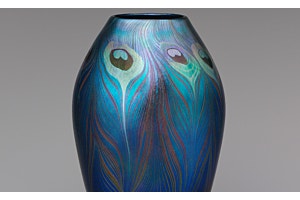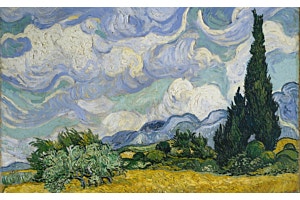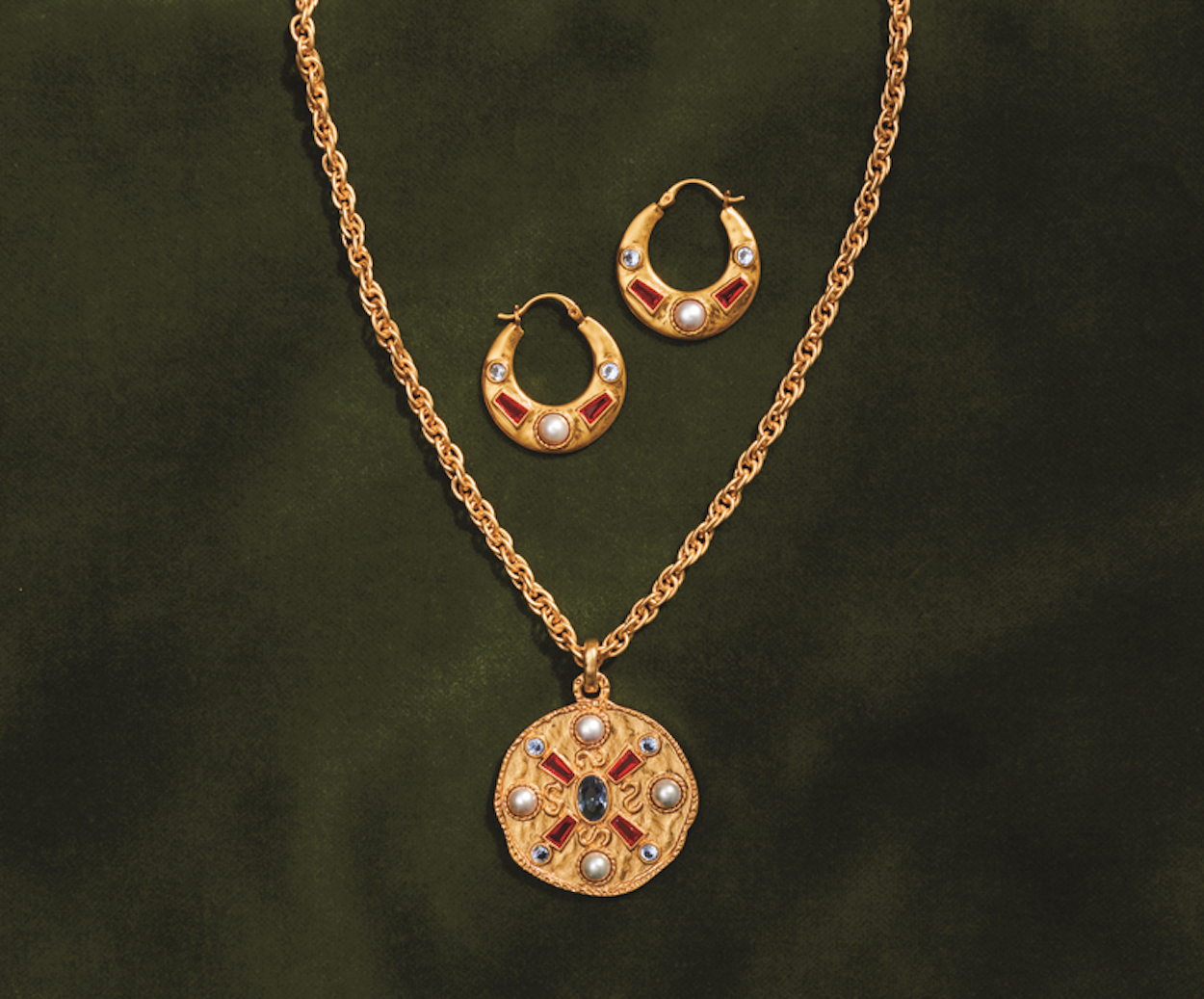
The Museum’s notable collection of Frankish objects exemplifies this bygone culture’s flair for statement style. Bold brooches, embellished hoops, and chunky necklaces indicate that the Frankish "look" was all about metals, stones, and beads. Bearing a range of European and Near Eastern influences, including Roman, Ostrogothic, Langobardic, Christian, Byzantine, and Hiberno-Saxon, such Frankish artifacts have vitally bridged the gap between Late Roman and early medieval Carolignian visual traditions.
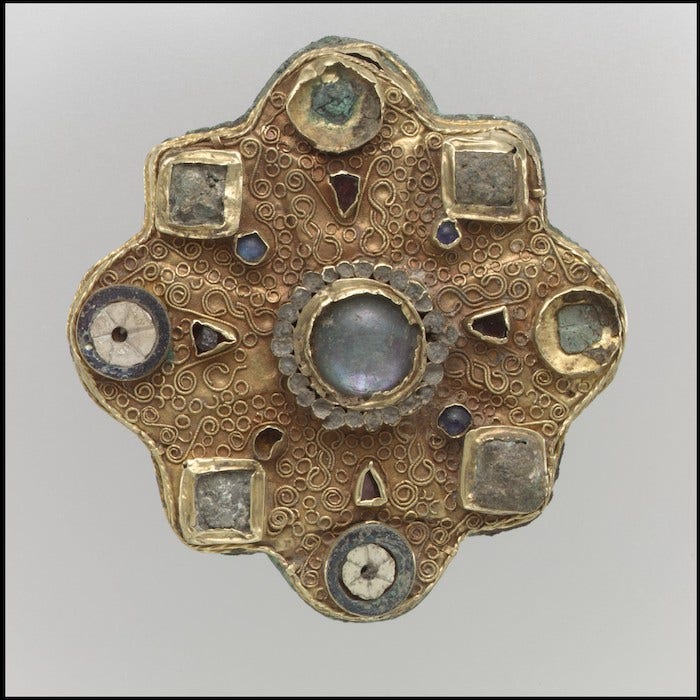

The Franks, a Barbarian Germanic people who emerged as far back as the 1st century A.D., were forest dwellers who originally lived in smaller tribes between the Rhine and Weser rivers. The region they inhabited eventually became the border of the Roman Empire, and over the centuries, these Frankish groups merged and migrated to the so-called Roman Gaul: an area shared by modern-day France, Belgium, and Luxembourg, as well as parts of Germany, Switzerland, and the Netherlands.
Early Frankish creations bear a strong Roman influence in the way of classical intaglios and blown glass, which the Romans introduced to western and northern Europe. The Franks continued glassmaking well after the Roman Empire’s decline.
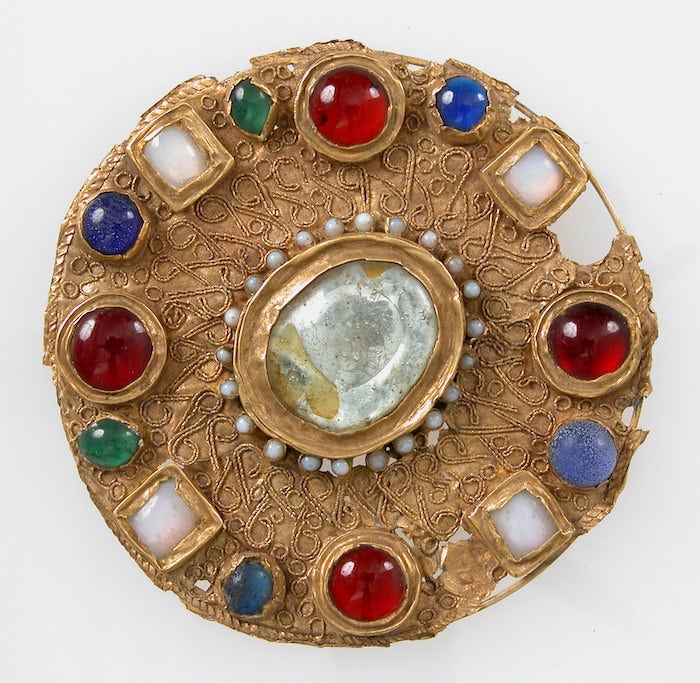

Richly ornamented Frankish weapons, jewelry, and belt buckles likewise celebrate the arts of the Ostrogoths, another Germanic people who migrated from Scandinavia to southern Russia in the early 3rd century A.D. There, they took up the practice of embedding stones in metal. Garnets inlaid in gold as well as brooches in the shape of bows and birds are distinctly Ostrogothic influences observable in Frankish art, though there has yet to be a scholarly consensus on how the Franks encountered them. One theory is that the Frankish court employed Ostrogothic artisans; another proposes that the Ostrogoths who migrated westward came into contact with the Franks along the way.
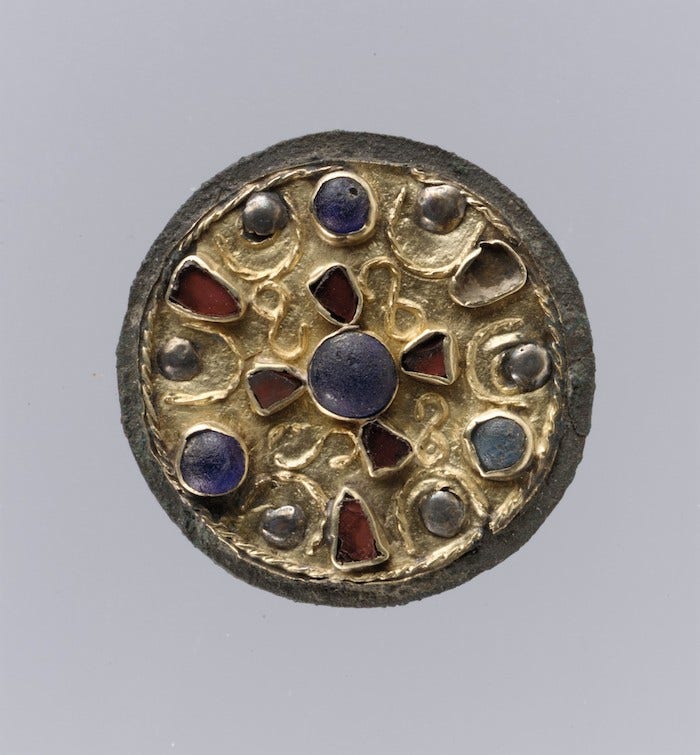

This Frankish disk brooch (above) embedded with garnets and glass is the inspiration behind our new Medieval Stone jewelry. Brooches such as this one in The Met collection were central to the evolution of Frankish fashion; between the 4th and 6th centuries, women employed pairs of small brooches in inventive shapes to fasten the wraps they wore around their tunics. By the 7th century, single, large, and elaborately decorated disk brooches became popular functional adornments. The brooch is regarded as the most characteristic element of Frankish dress.
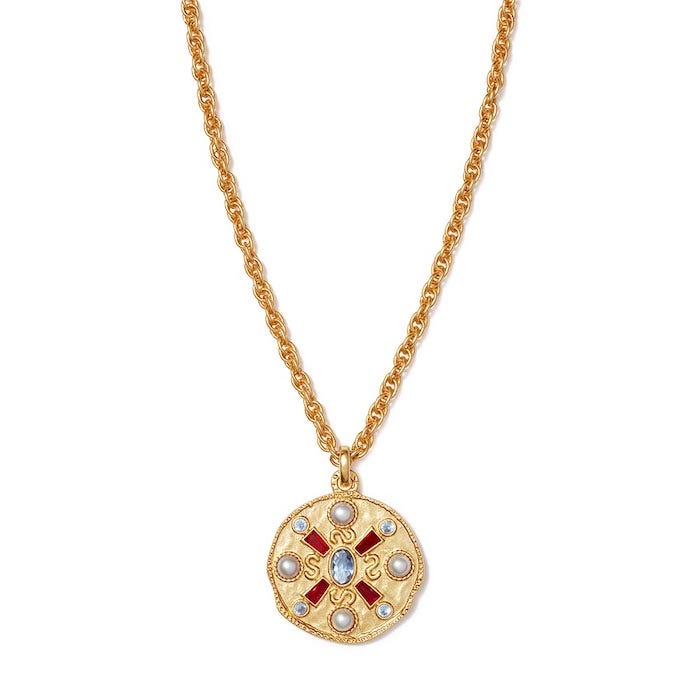

The Met is also home to fabulous Frankish beads, which exhibit a variety of patterns, colors, and shapes. Our new Frankish Gemstone Beaded suite reimagines the glass, stone, shell, and amber beads on a necklace crafted in Niederbreisig, Germany, between A.D. 500 and 600, with contemporary beads of jasper, tiger iron, and lapis.
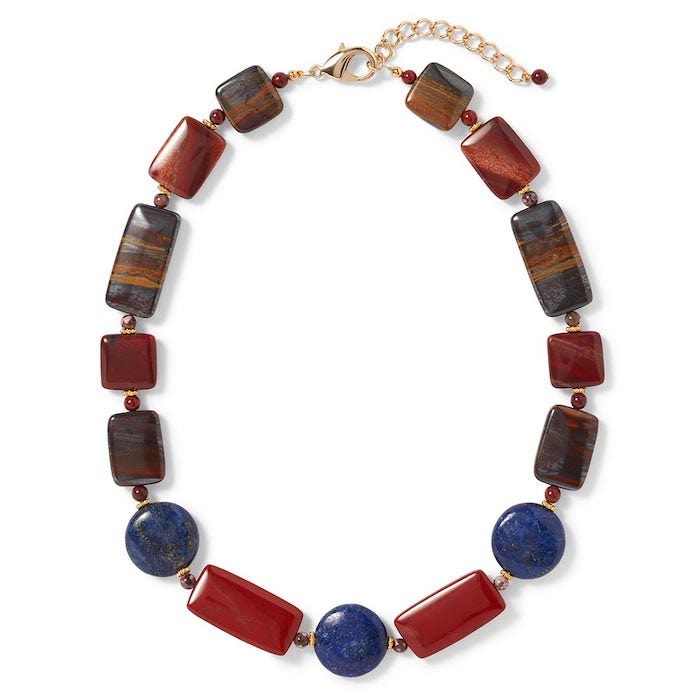

The Met's remarkable Frankish pieces once belonged to J. Pierpont Morgan, who amassed an important collection of Frankish art. His acquisitions were subsequently bequeathed to the Museum by his son in 1917. The Frankish pieces on view can be seen in Gallery 301 at The Met Fifth Avenue.
Shop our new Frankish-inspired jewelry in-store and online.




